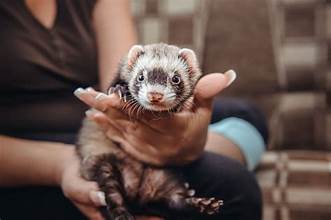Owning an exotic pet is a truly unique and rewarding experience that sets you apart from traditional pet owners. However, training and socializing exotic pets can be challenging yet profoundly fulfilling. Unlike traditional pets, exotic animals have specialized needs and behaviors that require a thoughtful approach. This guide will help you understand how to properly train and socialize your exotic pet, ensuring a healthy and happy life.
Understanding Your Exotic Pet
Before training begins, it’s crucial to delve into the unique characteristics of your pet’s species, their natural habitat, and behavior. Exotic pets include reptiles, birds, amphibians, rodents, and even exotic mammals like ferrets and sugar gliders. Understanding their instincts and body language is not just a step but a responsibility that will set the foundation for successful training and socialization.
Essential Training Techniques
1. Positive Reinforcement
Exotic pets respond best to positive reinforcement, where desired behaviors are rewarded. This could include:
- Treats (species-appropriate)
- Verbal praise
- Gentle petting (if appropriate for the species)
- Clicker training (for some species like birds and certain mammals
2. Routine and Consistency
Repetition and consistency are key when training exotic pets. Keep sessions short and frequent, ensuring that commands or desired behaviors are repeated simultaneously.
3. Target Training
Target training involves using a stick or an object to guide your pet into performing desired actions. This method works well for:

- Birds (parrots, cockatoos, etc.)
- Reptiles (bearded dragons, turtles, etc.)
- Small mammals (ferrets, rabbits, sugar gliders)
4. Handling and Taming
Gradual, gentle handling is essential for taming exotic pets. Follow these steps:
- Start by letting your pet get used to your presence.
- Offer food from your hand to build trust.
- Use slow and predictable movements to avoid startling them.
- Increase handling time gradually, always respecting their comfort level.

Socialization Strategies
Socialization helps exotic pets become comfortable in various environments and with different people.
1. Early Exposure
Start socialization at a young age. Younger animals adapt more quickly to new experiences.
2. Gradual Introduction to People
Expose your pet to different people, ensuring interactions remain calm and positive. Avoid forcing interaction if your pet seems stressed.
3. Environmental Enrichment
Providing a stimulating environment helps exotic pets become well-adjusted. Consider:
- Climbing structures and hiding spots
- Interactive toys and puzzle feeders
- Exposure to different sounds and textures
4. Preventing Stress and Aggression
- Avoid overstimulation by introducing changes slowly.
- Observe body language and respect their space when they show signs of stress.
- Provide a safe retreat area where they can feel secure.
Species-Specific Tips
- Reptiles:
Many reptiles do not require extensive socialization but benefit from gentle, infrequent handling to reduce stress.
- Birds:
Parrots and other intelligent birds require regular social interaction and mental stimulation.
- Rodents:
Small animals like gerbils and guinea pigs thrive on gentle, consistent handling and social playtime.
- Sugar Gliders & Ferrets:
These social animals need plenty of interaction with their owners and enrichment activities to prevent boredom.
Common Mistakes to Avoid
- Inconsistency:
Unpredictable training routines confuse your pet.
- Overhandling:
Some exotic pets prefer limited physical contact and can become stressed with excessive handling.
- Using Punishment:
Negative reinforcement can lead to fear and behavioral issues.
- Ignoring Signs of Stress:
Continuously monitor your pet’s body language to ensure they are comfortable.
Final Thoughts
Training and socializing an exotic pet is not a task for the faint-hearted. It requires unwavering patience, dedication, and a deep understanding of its needs. But remember, the journey is as rewarding as the destination. Positive reinforcement, gradual exposure, and environmental enrichment can help you build a strong bond with your pet and ensure its well-being. Whether you own a parrot, reptile, or small mammal, the right approach will lead to a happy and confident exotic companion.



